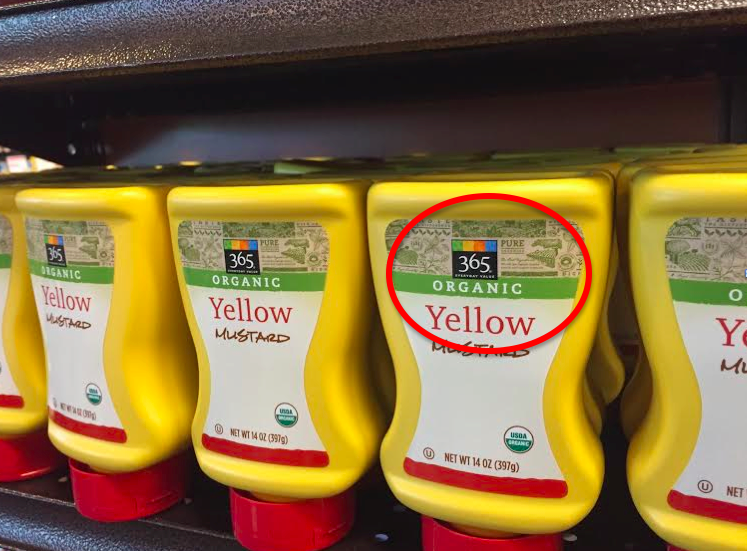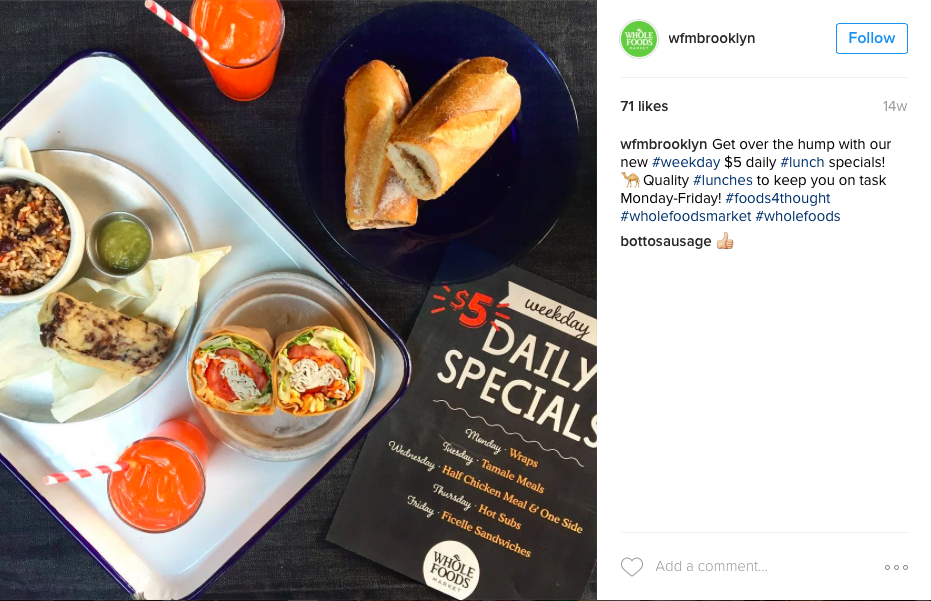Let’s face it– if you are like me and spend way too much money at Whole Foods, you are probably a health food snob. No shame. We like our fresh-pressed green juice– sue us! For us, eating healthy isn’t just a habit, it’s a complete lifestyle. But an expensive one for sure.
However, there’s no need to go broke just because you like your kale massaged or your eggs cage-free. The following 5 hacks will let you eat your whole foods and have them too.
1. Opt for “365 Everyday Value” Products

Photo by Abbey Fernandez
If you’re a regular you’ve probably come across products packaged with a floral “365” label. These should be your best friend because “365 Everyday Value” is the generic Whole Foods brand (read: slightly cheaper than other non-Whole Foods brands).
According to a recent Business Insider report, Whole Foods has spun the 365 brand into its own chain of grocery stores, called “365 by Whole Foods Market.” The first store opened recently in Los Angeles and even includes a By Chloe inside to add a leisurely element to the typical grocery store experience. Talk about a one-stop shop. 365 FTW.
2. Buy in bulk

Photo by Abbey Fernandez
When it comes to the nuts, seeds, legumes, etc. section, buy in bulk. That is, rather than buying a prepackaged bag of chia seeds or assorted nuts, DIY in the Whole Foods bulk section. These items are priced per pound so you can fill your bag depending on exactly how much you need. Because we all hate when trail mix is like 75% peanuts. If you’re all about that perfect ratio, buy in bulk.
3. Homemade snacks > store bought

Photo by Abbey Fernandez
I love me a good bag of vegan cheese kale chips but they tend to be costly and come with only 1 to 3 servings per each pricey bag. Good thing so many of the packaged products that Whole Foods has to offer can be easily replicated. The trick is to buy the various ingredients and put them together on your own to save some money. Kale chips, granola bars, roasted chickpeas, energy cookies– all of your favorite snacks can be homemade.
For example, these no-bake carrot cake protein bars are chock full of healthy ingredients that can all be found at Whole Foods but you’ll save money by making them on your own. Or try this healthy homemade granola bar recipe. Not to mention you avoid all the artificial additives often found in protein or energy bars. Because, yes, even products from Whole Foods can be made of junk. Click here for an official ranking of snack bars by nutrition content.
4. Cutting your own fruits & veggies > store bought

Photo by Abbey Fernandez
There’s no doubt Whole Foods produce is always fresh and delicious. But those beautifully assorted veggie platters and fruit salad cartons can be quite costly. Just like homemaking your own snacks, cutting your own fruit and veggies rather than buying them precut saves money.
While we can all appreciate the precut bright fruit chunks packaged neatly in a plastic container, convenience comes with a cost. Rather than splurging on pre-sliced produce, save money by purchasing the fruits and veggies whole and then cut them yourself. And, after slicing and dicing, if you find yourself with fruits and veggies to spare, try making one of these 3 refreshing smoothies.
5. Follow your local Whole Foods on Social Media

Photo courtesy of @wfmbrooklyn on Instagram
Major foodie key: following your favorite restaurants, vendors, and stores on social media keeps you in the know about the latest insider deals. The local Whole Foods Facebook page or Instagram will keep you updated about any and all upcoming events, promotions, or sales (in-store wine tasting anyone? For certain states, that is).
Believe it or not, the use of social media is one of the best foodie hacks because businesses want to reward their followers by giving them the inside scoop. Next time you find yourself shamelessly stalking, check the Whole Foods page to stay on top of the deals and steals.
There’s no doubt Whole Foods has the best of everything. But the best of everything doesn’t necessarily have to cost you. Don’t let Whole Foods rob you of your whole paycheck and shop smarter next time with these 5 food hacks.


